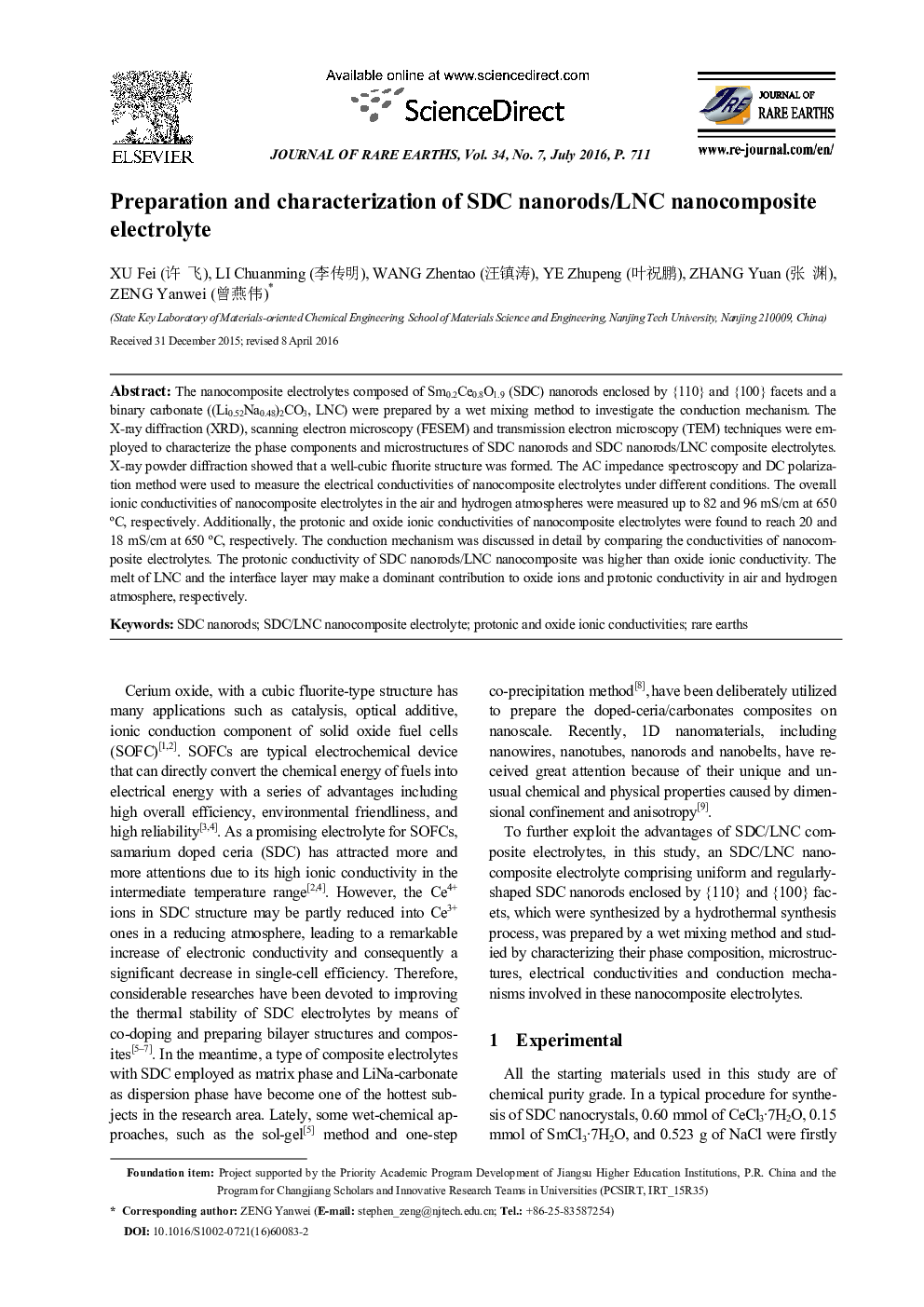| Article ID | Journal | Published Year | Pages | File Type |
|---|---|---|---|---|
| 1258229 | Journal of Rare Earths | 2016 | 6 Pages |
The nanocomposite electrolytes composed of Sm0.2Ce0.8O1.9 (SDC) nanorods enclosed by {110} and {100} facets and a binary carbonate ((Li0.52Na0.48)2CO3, LNC) were prepared by a wet mixing method to investigate the conduction mechanism. The X-ray diffraction (XRD), scanning electron microscopy (FESEM) and transmission electron microscopy (TEM) techniques were employed to characterize the phase components and microstructures of SDC nanorods and SDC nanorods/LNC composite electrolytes. X-ray powder diffraction showed that a well-cubic fluorite structure was formed. The AC impedance spectroscopy and DC polarization method were used to measure the electrical conductivities of nanocomposite electrolytes under different conditions. The overall ionic conductivities of nanocomposite electrolytes in the air and hydrogen atmospheres were measured up to 82 and 96 mS/cm at 650 °C, respectively. Additionally, the protonic and oxide ionic conductivities of nanocomposite electrolytes were found to reach 20 and 18 mS/cm at 650 °C, respectively. The conduction mechanism was discussed in detail by comparing the conductivities of nanocomposite electrolytes. The protonic conductivity of SDC nanorods/LNC nanocomposite was higher than oxide ionic conductivity. The melt of LNC and the interface layer may make a dominant contribution to oxide ions and protonic conductivity in air and hydrogen atmosphere, respectively.
Graphical AbstractThe nanocomposite electrolytes composed of Sm0.2Ce0.8O1.9 (SDC) nanorods enclosed by {110} and {100} facets and a binary carbonate ((Li0.52Na0.48)2CO3, LNC) were prepared by a wet mixing method to investigate the conduction mechanismFigure optionsDownload full-size imageDownload as PowerPoint slide
